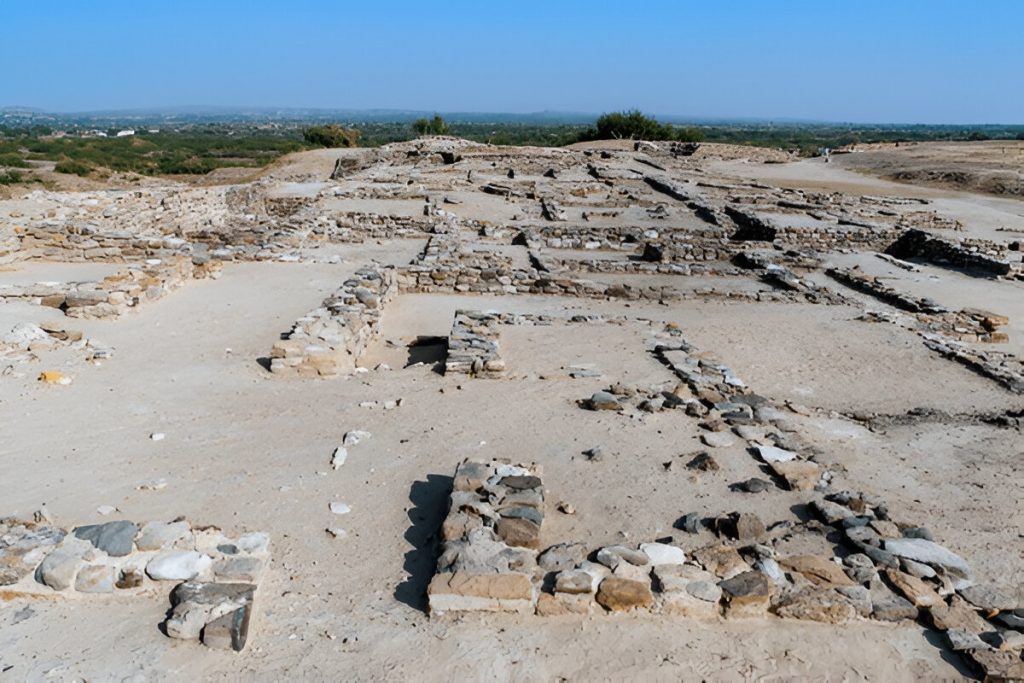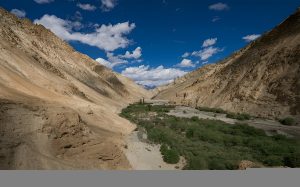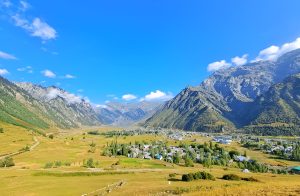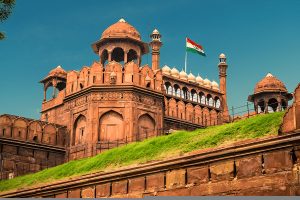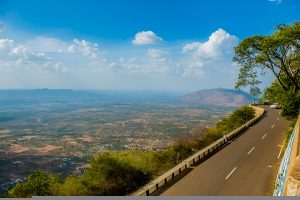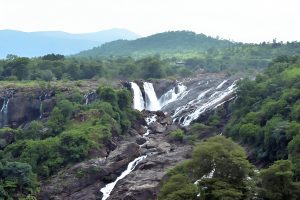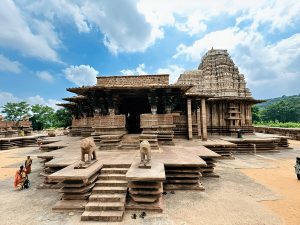As students of history, my friend Ravi and I were always intrigued by the ancient civilizations that existed on the Indian subcontinent. Our college lives were full of tales of lost empires, cryptic ruins, and lost cities. But when we got a chance to see Dholavira – one of the most important archaeological sites of the Harappan Civilization – we just couldn’t let it go. On the dry island of Khadir, in Gujarat’s Kutch district, Dholavira guaranteed not only to satiate our thirst for knowledge but to take us on a living experience of the Indus Valley Civilization. So, we set off from Delhi, carrying our bags with us, anticipating a once-in-a-lifetime discovery.
The Journey to Dholavira
We began our journey from Delhi, taking a flight to Bhuj, the nearest city with a major airport. From there, we took a six-hour drive across the rugged Kutch landscape, where the vast, barren stretches of land gradually gave way to the ancient ruins of Dholavira. The excitement in our hearts was palpable as we finally arrived at the site, where time seemed to stand still.
Discovering Dholavira: A Site Frozen in Time
Dholavira was everything we had hoped for – a treasure trove of history, waiting to be explored. The site, which dates back to around 3000 BCE, is one of the five largest Harappan sites and is still remarkably well-preserved. It felt like stepping into a different era, where the once-thriving city was now a silent witness to centuries of history.

We started our exploration with the large city gates and the impressive walls that were still standing after thousands of years. The architecture was sophisticated, and as history students, we were immediately struck by the advanced urban planning of the city. We marveled at the layout of the streets, which were carefully designed in a grid pattern – a hallmark of the Harappan Civilization. The level of organization and urban planning here was mind-boggling for its time, especially considering the limited resources they had.
The Water Management System: A Marvel of Ancient Engineering
One of the most intriguing discoveries we made at Dholavira was the advanced water management system. The Harappans had ingeniously designed reservoirs and stepwells to store and conserve water, crucial in such an arid region. The site had large rectangular reservoirs, some of which were carved directly into the stone. The design showed a clear understanding of hydraulic engineering, and we couldn’t help but wonder how they managed to survive in such a harsh environment, with limited rainfall.
What struck us most was the network of drains and the way water was carefully channeled and distributed throughout the city. As two students who studied ancient engineering marvels, it was fascinating to witness how they solved the challenges posed by nature with such ingenuity.
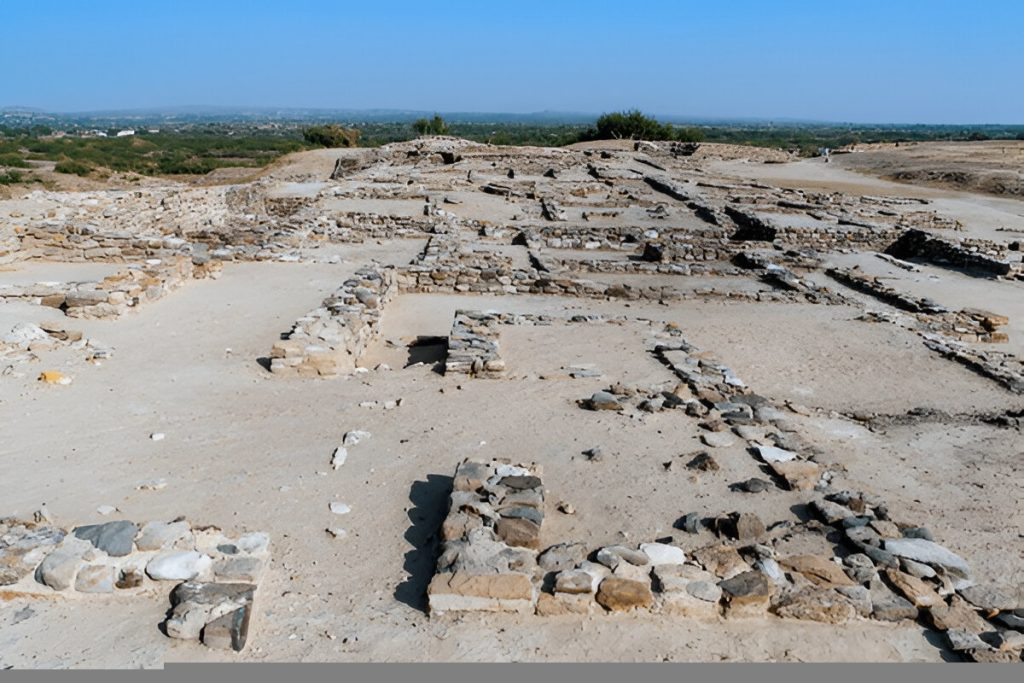
The Unsolved Mystery: The Inscriptions
One of the other highlights of our trip was the series of inscriptions on stone at Dholavira. These inscriptions, incised on the stones, remain largely uncoded, lending a sense of mystery to the site. We stood before these cryptic scripts for hours, attempting to get a grasp on their meaning. Were they an early system of writing? Might they hold secrets about the Harappan civilization lost to the ages? The inscriptions reminded us of how much we still need to learn about this ancient civilization.
Artifacts and the Heart of the Civilization
While walking through the excavation site, we came across several artifacts that had been unearthed over the years – pottery, beads, tools, and even jewelry. These small pieces of history offered a glimpse into the daily lives of the people who lived there. We found pottery with intricate designs and even tools made from stone and copper, showing their skill in craftsmanship. The remnants of their lives were scattered around the site, frozen in time, waiting to be uncovered.
The most awe-inspiring moment was when we reached the top of the acropolis, which offered a breathtaking panoramic view of the site and the surrounding desert. Looking out over the remains of a once-thriving metropolis, we couldn’t help but feel a deep sense of respect for the civilization that once flourished here.
The Beauty of Dholavira
In addition to the archaeological marvel, Dholavira itself is breathtaking. The desert that lies around the ruins is as unyielding as it is lovely. The emptiness of the land, the golden dunes leading off into the distance, and the salt marshes form a hauntingly serene mood. The stillness at the site was near-meditative, punctuated only by the occasional bird’s song or the rush of the wind across the ruins. It was not difficult to picture what life would have been like here a thousand years ago.

Reflections on the Trip
As history students, visiting Dholavira was a dream come true. The site left us with more questions than answers, and we couldn’t help but think about the mysteries that still remain hidden beneath the ground. What happened to the people of Dholavira? Why did the city decline and eventually disappear? These questions lingered in our minds as we left the site, but the knowledge we gained and the memories we made would stay with us forever.
For anyone with an interest in history, archaeology, or ancient civilizations, Dholavira is a must-visit. It’s not just an archaeological site – it’s a journey through time, offering a rare opportunity to walk in the footsteps of a lost civilization. And for Ravi and me, it was an experience that deepened our love for history and reminded us why we chose to study the past – to unlock the mysteries of our shared human heritage.

